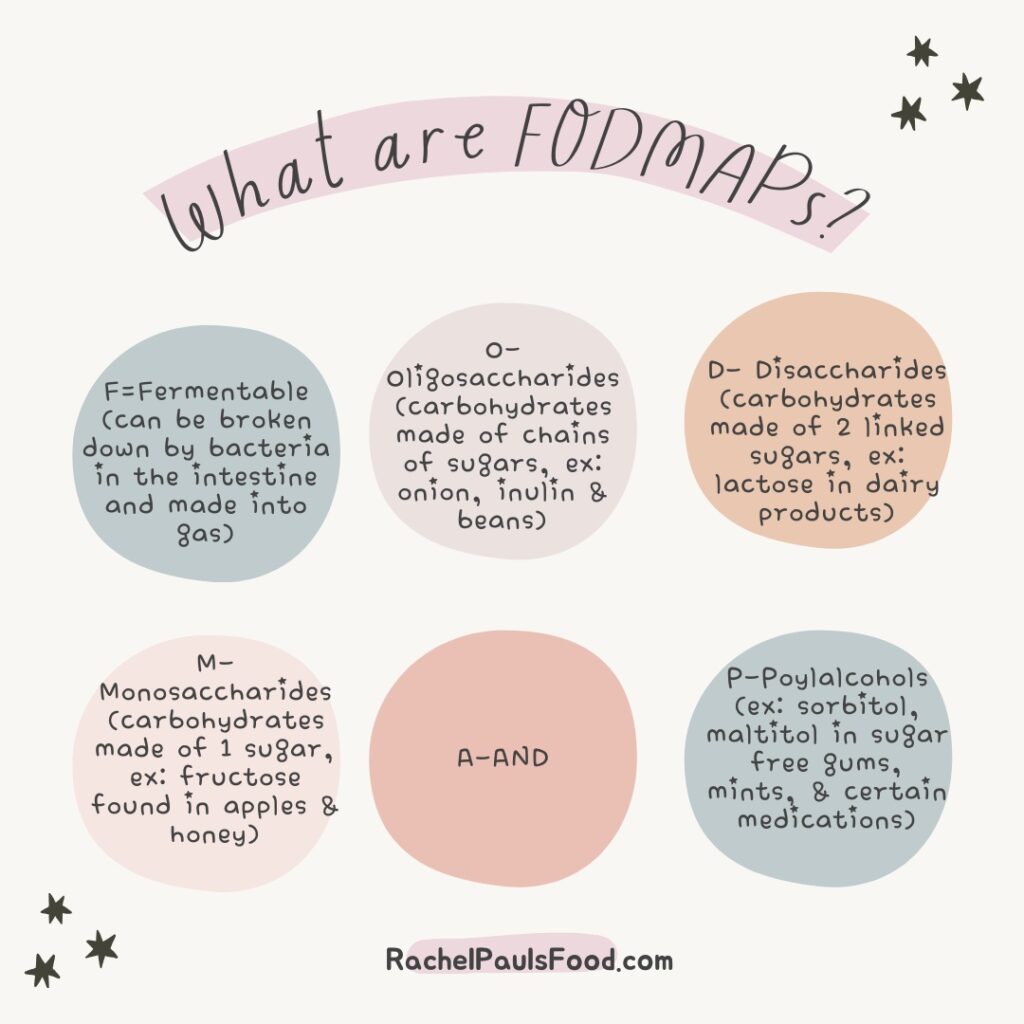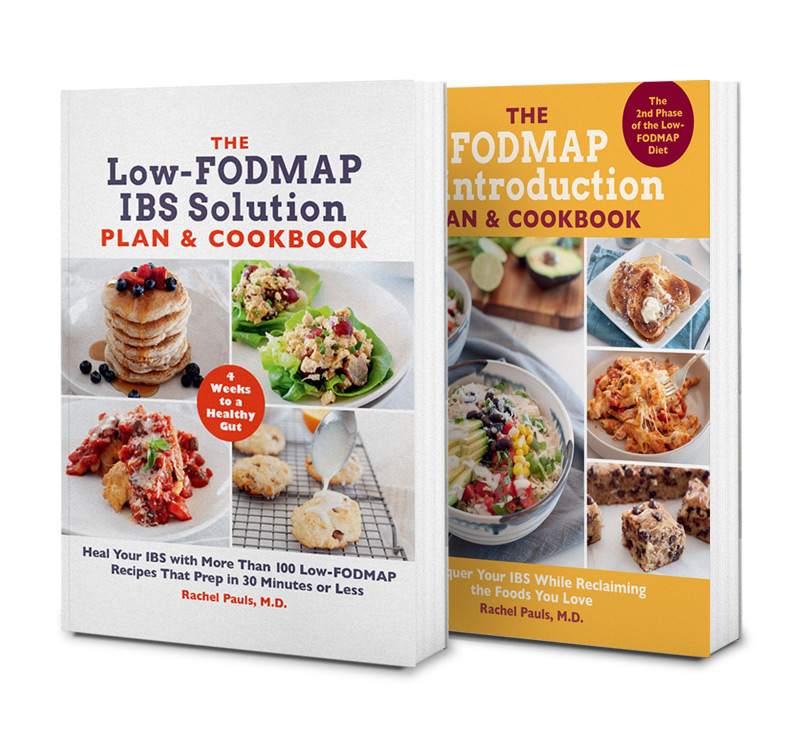The low-FODMAP diet is the #1 doctor recommended treatment to reduce symptoms of irritable bowel syndrome, or IBS.
Unlike a drug, or expensive program, this program simply involves eliminating the foods that lead to symptoms.
The low-FODMAP diet is a process that has three phases:
The elimination phase is the most restrictive, and knowing what foods you can eat will be very important to guide you.

Why should you care about carbohydrates known as FODMAPs in your food? Because they could be contributing to your tummy troubles!
After you chew and swallow food, it moves into the stomach. From the stomach it journeys first to the small intestine, followed by the large intestine. As the food travels, chemicals (called enzymes) in the intestines break it into digestible parts.
FODMAPs, unlike some other carbohydrates, are tricky for the intestines to digest, so they stick around longer. As a result, they can pull too much, or too little water into the gut, or be fermented by gut bacteria. For some people, this can trigger uncomfortable IBS symptoms such as gas, bloating, cramping, constipation and/or diarrhea. Since eating FODMAPs triggers the symptoms, a low-FODMAP diet often makes people feel much happier and healthier.
If your doctor, dietitian or other provider has recommended a low-FODMAP diet, then you’ve come to the right place. Below is our low-FODMAP guide as well as a list of low and high-FODMAP foods. These will help you navigate the low-FODMAP diet through detailed FODMAP diet PDFs.
If you are looking for low-FODMAP menu options, I have created over 600 free low-FODMAP recipes for you. For other information, see my blog for 75+ posts providing guidance and tips on the low-FODMAP diet.
Download the FODMAP Guide PDF and the FODMAP food list PDF for free below!
If you are looking for the best sources to navigate all three phases of the low-FODMAP diet, then we have the books for you!
Dr. Rachel Pauls has written two bestselling cookbooks on the low-FODMAP diet.

Get your copy at all fine book sellers and Amazon today!
FODMAPs are carbohydrates found in many common foods. They can be difficult to digest and therefore trigger gas, bloating, diarrhea and other symptoms associated with IBS. The term FODMAP is an acronym that stands for:
F: fermentable (easily broken down by bacteria in your digestive system)
O: oligosaccharides (short chain carbohydrates found in wheat, onion, garlic and beans)
D: disaccharide (formed of two sugars together, example lactose- a commonly malabsorbed sugar in some dairy foods)
M: monosaccharide (examples of glucose, galactose and fructose, also known as fruit sugar, commonly found in apples, pears, honey and agave syrup)
A: and
P: polyols (sugar alcohols such as those typically added to sugar-free gum and mints and commonly found naturally in pears, apples, cauliflower, mushrooms and stone fruits)
We strongly recommend a low-FODMAP app to navigate the most current lists of low-FODMAP items, tested and updated regularly.
Here are our two choices:
The low-FODMAP diet is not a gluten-free diet. However, it does restrict the fructans in wheat, therefore many gluten containing foods should be omitted.
Likewise, items that contain dairy are eliminated if they are high in lactose. Foods such as butter, or cheese, that are naturally low in lactose, may be consumed on the low-FODMAP diet.
For more information like this, see my low-FODMAP blog for amazing tips and know-how!